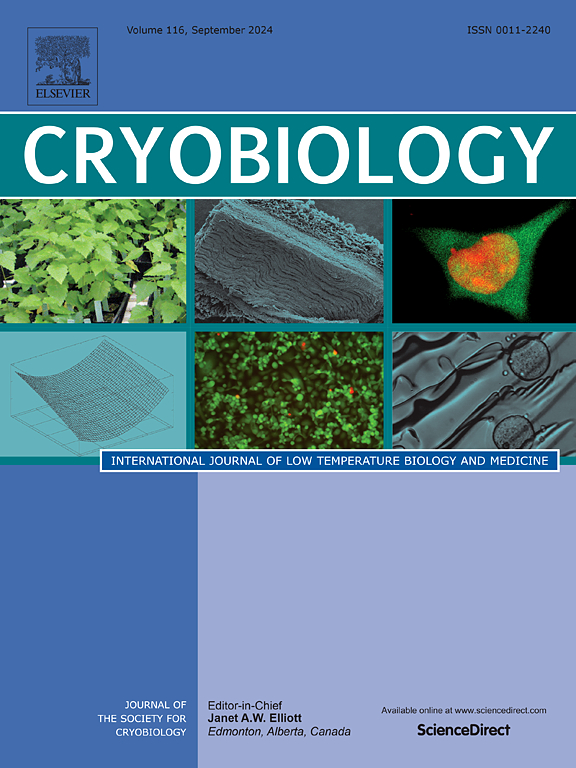大黄鱼(Pseudosciaena crocea)在冷冻贮藏期间受温度影响的稳定性:质量属性、肌纤维特征和微观结构。
IF 2.3
3区 生物学
Q2 BIOLOGY
引用次数: 0
摘要
在运输和冷冻储存过程中,温度滥用现象经常发生,影响冷冻水产品的质量。温度滥用产生的再结晶会对肌肉组织和微观结构造成不可逆的破坏,并加剧不良的氧化反应,从而降低冷冻水产品的质量。本研究建立了-24 °C和-7 °C交替温度滥用模型系统,以评估温度滥用对冷冻大黄鱼稳定性的影响。结果表明,温度滥用会导致水分随贮藏时间的延长而迁移,并使口感、色泽和新鲜度变差。此外,肌纤维蛋白(MP)的结构受到严重破坏,总巯基和 Ca2+-ATPase 活性逐渐降低,二级结构松散,蛋白质构象被破坏。共焦激光扫描显微镜(CLSM)分析还发现,温度滥用加剧了蛋白质的聚集。因此,运输和冷冻贮藏过程中的温度滥用会对大黄鱼的稳定性产生负面影响,主要源于冰晶的生长和再结晶效应。这项研究有望为提高冷冻水产品的质量提供新的见解。本文章由计算机程序翻译,如有差异,请以英文原文为准。
Stability of large yellow croaker (Pseudosciaena crocea) as affected by temperature abuse during frozen storage: Quality attributes, myofibril characteristics, and microstructure
Temperature abuse occurs frequently during transportation and frozen storage, which affects the quality of frozen aquatic products. Recrystallization generated by temperature abuse leads to irreversible damage to the muscle tissue and microstructure, and exacerbates undesirable oxidation reactions, thus reducing the quality of frozen aquatic products. In this study, a modeling system of temperature abuse alternating between −24 °C and −7 °C was established to evaluate the effect of temperature abuse on the stability of frozen large yellow croaker. The results revealed that temperature abuse caused water migration with the extension of storage time, as well as poorer texture, color, and freshness. Furthermore, the structure of myofibrillar protein (MP) was severely damaged, with a gradual decrease in total sulfhydryl groups and Ca2+-ATPase activity, a loosening of the secondary structure, and a disruption of the protein conformation. The confocal laser scanning microscopy (CLSM) analysis also found that temperature abuse exacerbated protein aggregation. Therefore, temperature abuse during transportation and frozen storage could affect the stability of large yellow croaker negatively, and it mainly originated from the growth of ice crystals and the effect of recrystallization. The study was supposed to provide new insights into the improvement of frozen aquatic products quality.
求助全文
通过发布文献求助,成功后即可免费获取论文全文。
去求助
来源期刊

Cryobiology
生物-生理学
CiteScore
5.40
自引率
7.40%
发文量
71
审稿时长
56 days
期刊介绍:
Cryobiology: International Journal of Low Temperature Biology and Medicine publishes research articles on all aspects of low temperature biology and medicine.
Research Areas include:
• Cryoprotective additives and their pharmacological actions
• Cryosurgery
• Freeze-drying
• Freezing
• Frost hardiness in plants
• Hibernation
• Hypothermia
• Medical applications of reduced temperature
• Perfusion of organs
• All pertinent methodologies
Cryobiology is the official journal of the Society for Cryobiology.
 求助内容:
求助内容: 应助结果提醒方式:
应助结果提醒方式:


